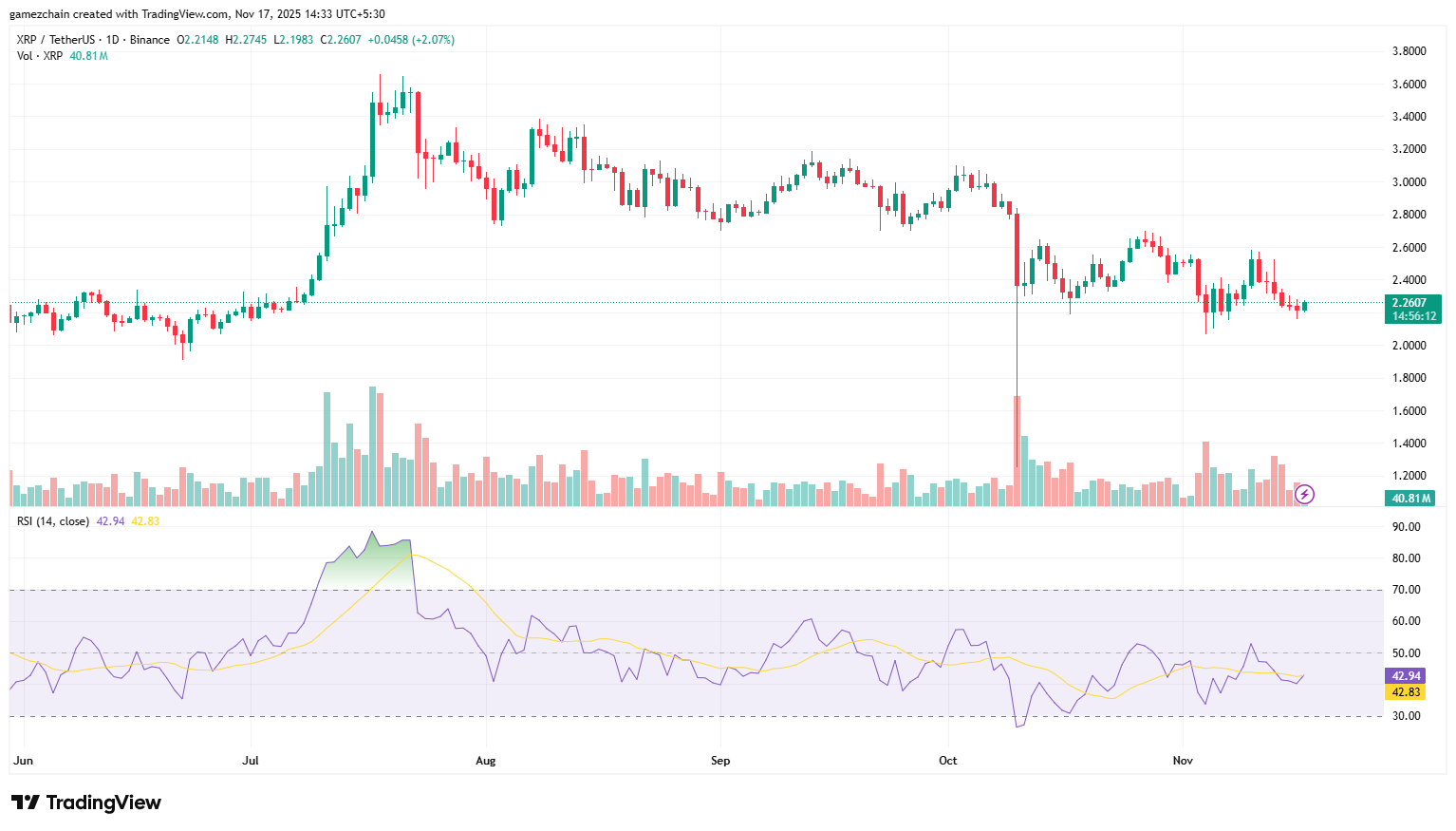XRP entered a major milestone with the launch of the XRPC ETF mid November. Many expected this moment to boost market confidence, attract institutional participation, and signal a new chapter of recognition for XRP’s payments technology. Instead, XRP slipped 4.3% to $2.22 shortly after the ETF went live. XRP was hit with heavy selling at important price levels, but then it suddenly bounced back with strong trading activity. This sharp V-shaped recovery suggests that the downward trend may be losing strength.
Canary Capital’s new U.S. spot XRP ETF (XRPC) saw a very strong start, recording $58.6 million in trading volume on its first day, far higher than analysts’ expectations of $17 million. However, this strong launch did not help stabilize the XRP price. In the derivatives market, pressure increased as $28 million worth of XRP positions were liquidated within 24 hours, with long traders (those betting on price going up) taking most of the losses.
XRP fell 4.3%, dropping from $2.31 to $2.22 in the 24-hour trading window ending November 16. The price moved within a tight $0.10 range and continued forming lower highs, which signals a bearish trend. The biggest wave of selling happened at 00:00 UTC, when 74 million XRP were traded, about 69% more than the daily average. This heavy selloff pushed the price below the $2.24 support level, leading it down to $2.22, the day’s lowest point. Throughout the decline, several large volume spikes, each above 57 million XRP, confirmed that sellers were in control.
Even though the ETF launch was a major event, XRP dropped further after failing to break above $2.31 and could not hold support near earlier price zones. The price eventually settled into a narrow consolidation between $2.22 and $2.23.

Technical Analysis: Support and Resistance:
Primary support: $2.22, the level where selling peaked
Immediate resistance: $2.23–$2.24, the zone where the breakdown began
Key Fibonacci support: $2.16 (0.382 level). If price falls below this, it could quickly drop to $2.02–$1.88
Volume Profile:
Breakdown volume: 74M XRP (+69%), confirming heavy selling
Two small volume spikes during attempted reversals (01:39 and 01:46): 4.7M XRP each, suggesting selling pressure may be slowing
Recovery phase: volume returned to normal levels, showing some traders are buying at the bottom
Even though XRP’s price dropped, blockchain data shows that $2.22 is an important support level. Many past trades happened around this price, meaning a lot of buyers consider it a fair value and are willing to step in there. During the recent decline, long-term holders bought most of the XRP being sold, which helped prevent panic and kept the market more stable. Technical indicators also suggest the selling pressure is easing. The RSI (Relative Strength Index) moved up from “oversold” levels toward a more neutral position, showing that sellers are losing strength.
In the past, when XRP reached this kind of setup, strong support, lighter selling, and steady activity on the blockchain, the price often entered a quiet phase and then gradually began to recover. XRP’s 4.3% decline after the ETF launch may seem discouraging, but the circumstances point to a broader market reaction rather than weakness in XRP itself. The strong support at $2.22, positive long-term holder behavior, and continued interest in payment-focused blockchain technology suggest that XRP is positioned to remain resilient.
Do you think XRP’s strong support at $2.22 is the beginning of a rebound, or could more volatility be ahead?
Stay informed with daily updates from Blockchain Magazine on Google News. Click here to follow us and mark as favorite: [Blockchain Magazine on Google News].
Disclaimer: Any post shared by a third-party agency are sponsored and Blockchain Magazine has no views on any such posts. The views and opinions expressed in this post are those of the clients and do not necessarily reflect the official policy or position of Blockchain Magazine. The information provided in this post is for informational purposes only and should not be considered as financial, investment, or professional advice. Blockchain Magazine does not endorse or promote any specific products, services, or companies mentioned in this posts. Readers are encouraged to conduct their own research and consult with a qualified professional before making any financial decisions.